Eastern Hemlock is one of my very favorite trees. The tall, regal personal, the needles and branches that offer a bluish light beneath them as the sun shines, the cathedral-like quality of the ancient ones. This time of year, you can see the bright green buds on the Eastern Hemlock that represent the growth of the tree for this season. As the buds grow older, they darken to the beautiful viridian green that is characteristic of the Eastern Hemlock tree. But, for the short window of time when the trees are budding–right now–Eastern Hemlock buds are a delicious treat.
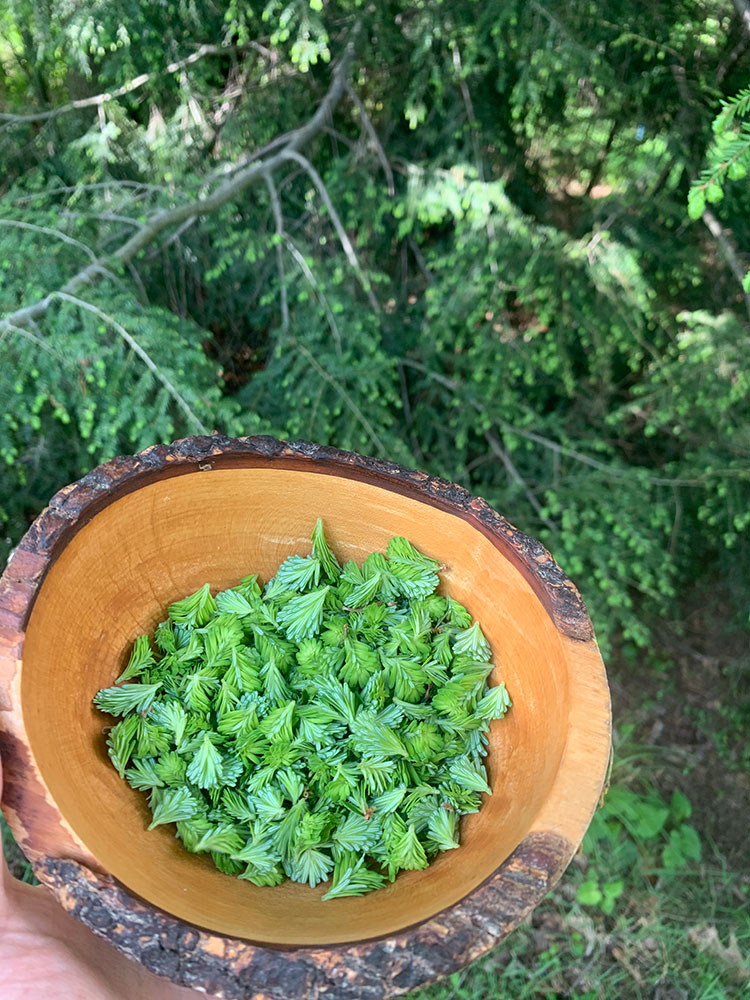
We happen to have many of these trees on our property, and some of the branches are starting to grow into our paths and have to be trimmed back. There are thousands of beautiful tiny green buds on each of the branches to be trimmed, which offered a good opportunity to create some new delicacies and experiment with a larger-than-usual volume of Eastern Hemlock buds. In this post, I’ll share three ways to enjoy the buds as well as some harvest instructions. If you want to learn more about the Eastern Hemlock’s magical and medicinal qualities, you can check out my earlier post.
Harvest
If you are going to eat these delicious treats, you need to first know how to harvest buds. You will want to get the buds as they are emerging–you have usually a 1-2 week window each year, and the exact timing will depend on the warmth or coolness of your spring (for us here in USDA Zone 6 in Western PA, that’s usually sometime in May).
The buds will first emerge in little casings; wait until they have fully emerged, like in my photo below. I recommend the buds when they are fully spread out but still bright green. They are prime when they have emerged and spread out a bit but haven’t gotten to the darker green color yet or too large.
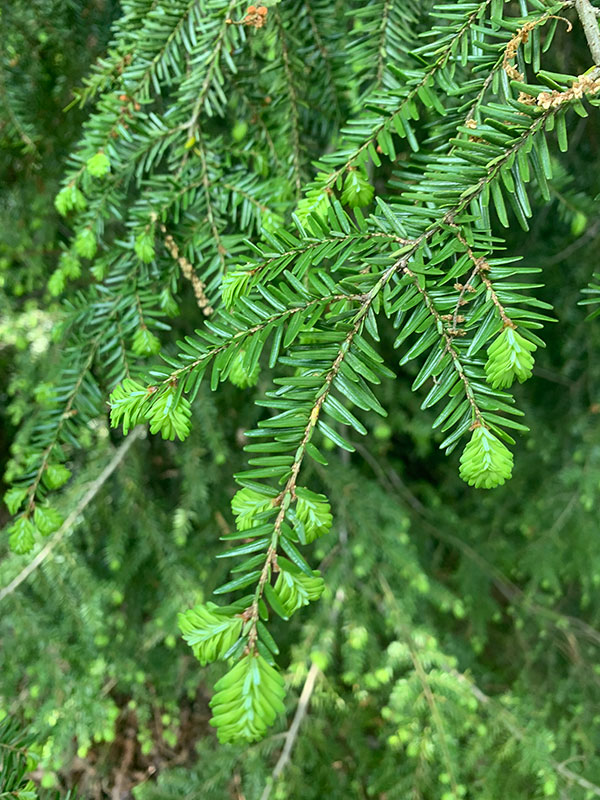
You will want to be very careful about how much you harvest, as each bud is potential new growth for the tree. If you are trimming a tree branch I am, then obviously you would harvest all of the buds on the branch that will be cut. But if you are harvesting from a tree without any trimming, you want to make sure you aren’t compromising the growth of that tree. I would suggest never harvesting the buds on the ends of the branch (this will prohibit future growth) but rather, harvest a bud or two per branch from further down the branch. I would also recommend harvesting from mature trees, not small trees (who need all of their growth). Finally, please be aware that the hemlocks are under serious threat from the Hemlock Wooly Adelgid, which may or may not be present in your area (do not harvest from any tree that is fighting this terrible pestilence–these hemlocks need all the help they can get! Instead, how about some ritual for them? )
Of course, like any other harvest from the land, harvest with gratitude. Offer something in return.
Flavor
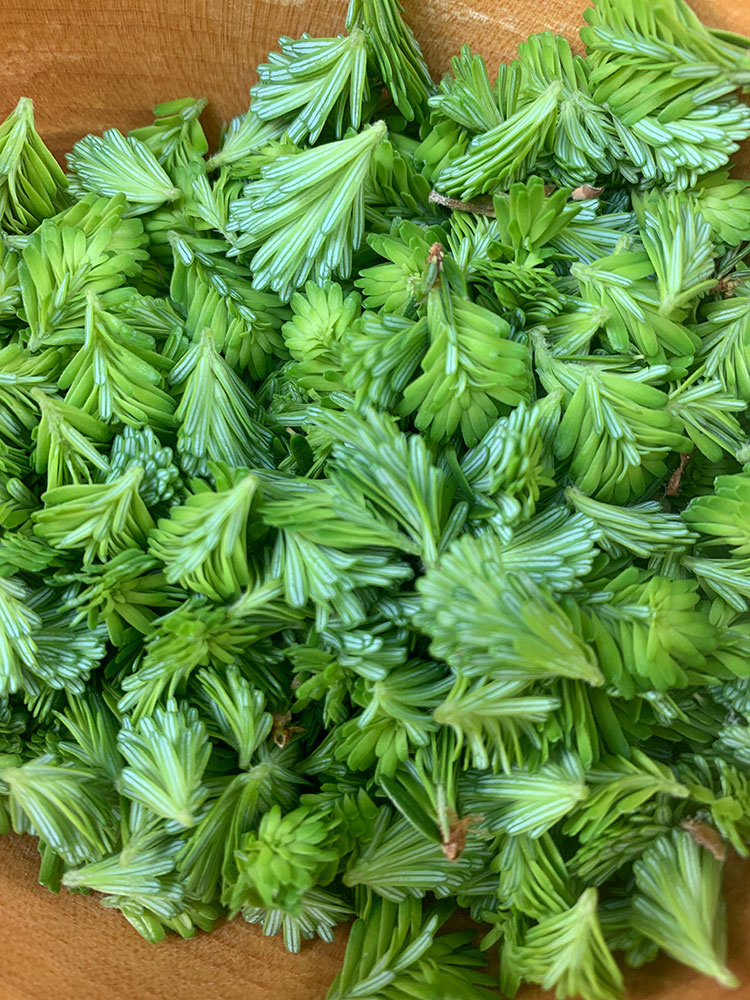
In my opinion, the Eastern Hemlock has the best tasting “tips” in my bioregion. The tips have a strong lemony taste with a hint of pine and a slightly bitter aftertaste. They are really delicious for fresh eating or in recipes.
They can delicious and quite strongly flavored in bulk, so they are really useful as a marinade or dressing, where the flavor can really have an impact.
Eastern Hemlock buds, like most other conifers, are high in Vitamin C.
Recipe 1: Fresh Eats, Salad, and Garnish
The first recipe is not really a recipe at all–you can simply nibble on the hemlock buds as a trailside treat. You can add them to fresh salads or as a garnish. They are amazing when sprinkled on top of meats or roasted veggies. Harvest them fresh and add whole buds to the salad. Harvest them fresh and chop them up as a spice. I really like them as a garnish for a baked or pan-fried fish!
Recipe 2: Tea (Hot or Cold)
Hemlock buds make an amazing, light, and refreshing tea. You can dry them or use them fresh (you can also use the mature needles, which have a stronger flavor that is also amazingly delicious). Pour 1 cup boiling water over 1 TBSP fresh buds or 1/2 TBSP dried buds/needles. Cover and let seep for 5 minutes. Add fresh honey to taste and enjoy!
Recipe 3: Eastern Hemlock Bud Dressing / Spread / Marinade
This is a recipe that my sister and I created this season and experimented with to find just the right combination.
The base is:
- 1/2 cup of Eastern Hemlock buds
- 1/2 cup of good quality olive oil
- 1/4 cup fire cider vinegar (or regular apple cider vinegar)
I would strongly suggest adding:
- 1/4 cup tahini
- 3 TBSP maple syrup or honey (to taste)
Start by adding your olive oil and Eastern hemlock buds to a food processor (if you don’t have a food processor, you can chop finely and stir everything by hand). Process them until they are fairly chopped up. Add your apple cider vinegar and maple syrup and pulse a few times. If you are going with the base dressing, then you are done and it is delicious!
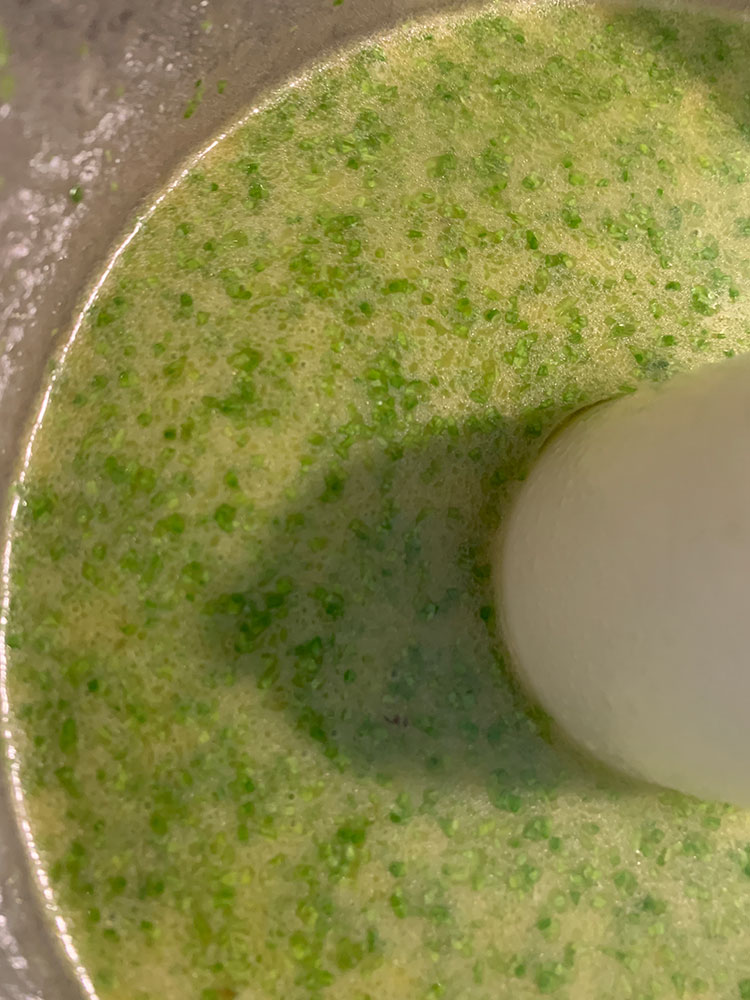
If you want to make a spread or thicker dressing, add your tahini. If you pulse this a lot, you will end up with a thick spread, almost the consistency of mayo (good for spreading on a sandwich). If you stir it by hand or pulse it only a little, you will end up with a lovely dressing for salads, marinades, and more.
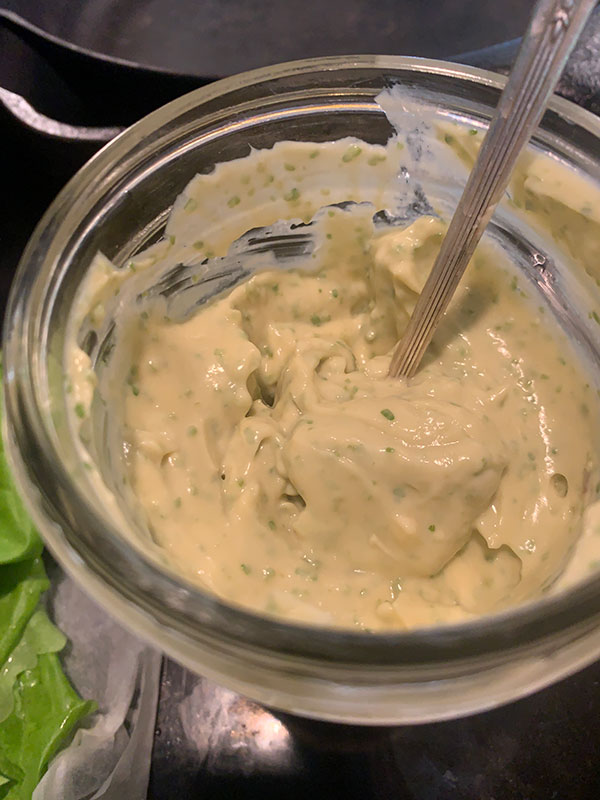
We had a nice salad and then a lunch of sauteed veggies (asparagus, celery, summer squash, broccoli, and kale) with the delicious dressing as a marinade and drizzle over some rice. I hope you enjoy this delightful wild-foraged treat and spend time communing with the beautiful and majestic Eastern Hemlock, my favorite of the trees.
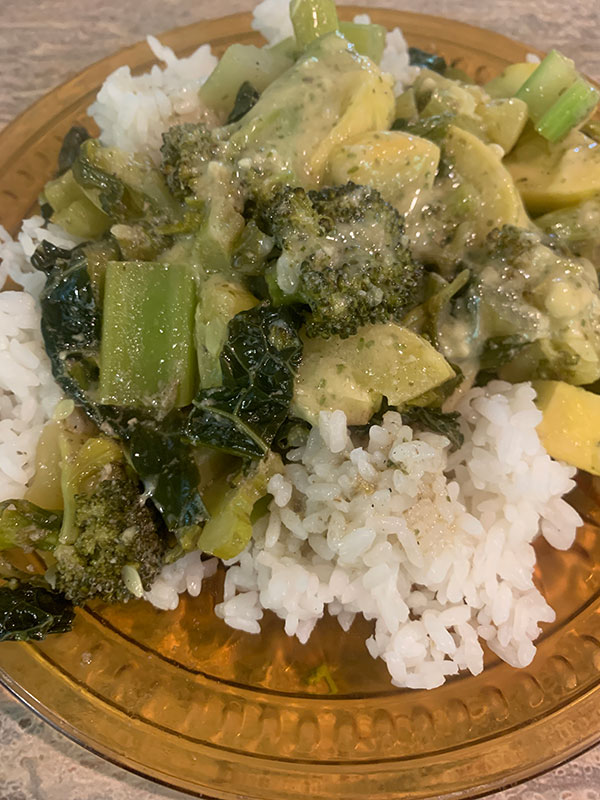
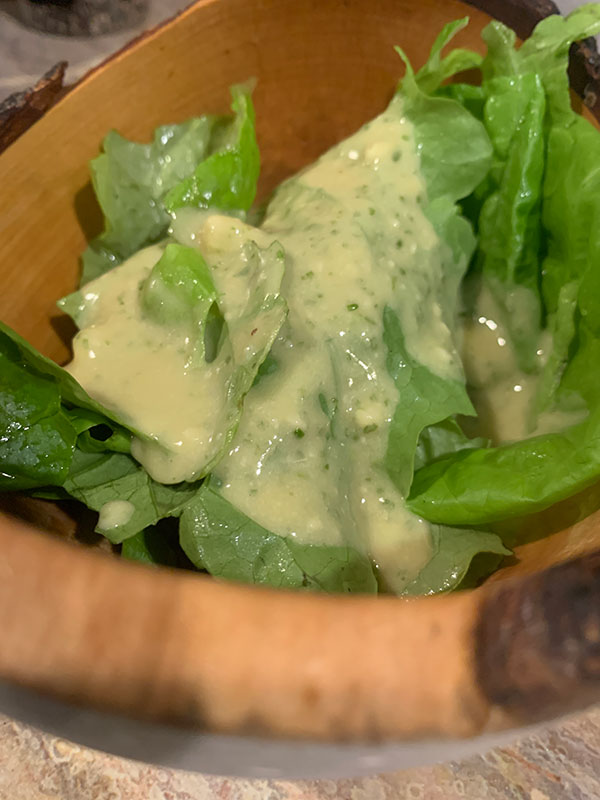

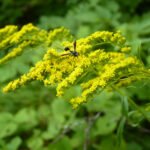

Reblogged this on Blue Dragon Journal.
Thank you for the reblog!
Reblogged this on Paths I Walk.
Thank you for the reblog!
Reblogged this on Rattiesforeverworldpresscom.
Thank you for the reblog!
You’re very welcome 🙂
That’s great! Thank you.
You are most welcome! Thank you! 🙂
[…] via Wild Food Profile – Eastern Hemlock Buds: Fresh Eating, Tea, and Eastern Hemlock Bud Dressing — … […]
This is great! Thanks Dana! I did not know this about the hemlock. Of course I would be very careful if harvesting and thank the tree.
On Sun, May 31, 2020 at 8:33 AM The Druid’s Garden wrote:
> Dana posted: “Eastern Hemlock is one of my very favorite trees. The tall, > regal personal, the needles and branches that offer a bluish light beneath > them as the sun shines, the cathedral-like quality of the ancient ones. > This time of year, you can see the bright green” >
[…] Forage on Hemlock tips (I suggest freezing the tips in ice cubes for use as a sore throat and cold t… […]